Nature Knows and Psionic Success
God provides
Aluminum is far from harmless – here’s how to reduce your exposure

( Natural News ) Aluminum doesn’t sound all that dangerous. We see it everywhere in our daily lives: we buy food in aluminum cans, we wrap our vegetables in aluminum foil and grill them, and many of us even unwittingly bake with it. The word aluminum certainly doesn’t strike fear into us the way metals like mercury and lead do, but this substance is far from harmless . Our exposure to aluminum begins shortly after birth because it’s used as an adjuvant in the vaccines that many newborns are given. In fact, in the first 18 months of life, the average child will receive 17 injections that contain aluminum. Some of the vaccines that can contain aluminum adjuvants include the hepatitis A, DTP, DTaP, influenza type B, HPV, rabies and anthrax vaccines. Even if you skip vaccines , you’re not out of the woods. That’s because it’s found in municipal tap water and kitchen staples like flour, salt, baking powder, and cocoa. It’s in cookware and food packaging, and it can even be found in over-the-counter antacids like Rolaids. Once you realize how prevalent it is, it should come as no surprise that 80 percent of the people tested were found to have excessively high levels of aluminum. That’s a scary statistic because it has no benefits to the body – quite the opposite, in fact. Aluminum is a neurotoxic substance that accumulates in the liver, brain, lungs, and kidneys. It affects bone mineralization, causes brain inflammation, and hinders calcium absorption. It has also been associated with several illnesses. For example, one study found that drinking water with a high concentration of aluminum raises the risk of Alzheimer’s disease. It has also been linked to anemia, ALS, anxiety, cognitive deficits, mood disorders, and insomnia. 100% organic essential oil sets […]
The Smoothie Whisperer: A Creativity Boost With Reishi + Tonic Herbs

COURTING CREATIVITY is a delicate process. While getting cracked out on coffee might give you a flood of new thoughts – and the endurance to chase them down – our best creative work comes from a place of calm. Whether it’s big a project at work, a side hustle or just a weekend DIY, make this functional smoothie recipe to keep those creative vibes flowing! Our favorite series this summer comes from Sage Dammers, co-founder of Addictive Wellness and resident Smoothie Whisper. We’ve been asking him to solve every life issue we have from behind the blender, including energy issues and that that low-budget life . This creativity booster includes one of “the greatest adaptogens in the world” that you probably haven’t heard of yet… Q: I’m looking for a smoothie to make when I need a creative boost. I want my brain to be firing away as I tackle work projects, but not overstimulated. I’d like something I can drink on the weekend too, when I have downtime to be creative! I want to feel open and inspired in my process, not too antsy or hyper-focused. A: Naturally, most people would reach for coffee in this situation, but there are much more interesting ways we can go about this! We’re looking for an experience of peaceful invigoration facilitated by the greatest tonic herbs rather than the simple stimulation offered by coffee. Gynostemma is not related to the tea plant and does not contain caffeine, so this is not technically a tea, but rather an herbal infusion. Coming from a small region in southern China where people regularly live to be over 80 and 100 years old, gynostemma is one of the greatest adaptogens in the world. It also holds the honor of being the highest saponin-containing plant known […]
Exercise: Closest Thing To A Free Miracle Anti-Aging Drug Available

Exercising will get the heart pumping, sweat flowing, and brain focused. Cardio/aerobic exercise can have significant and beneficial effects on both the mind and body and is well supported by a wealth of research with bodies of evidence that continue to grow including 2 recent studies just published in the journal Neurology and the journal Aging Cell. Middle aged women who are physically fit were roughly 88% less likely to develop dementia in a study involving 191 women with the average of 50 for 44 years. Researchers from the University of Gothenburg assessed subject cardiovascular health using cycling tests to group subjects into one of three categories: unfit, moderately fit, or fit. Over 44 years subjects were screened regularly for dementia with 32% of unfit subject being diagnosed with dementia, one quarter of the moderate fit subjects being diagnosed with the condition, and only 5% of the fit women developed dementia. Links were shown between fitness and decreased risk but was not able to prove one caused the other, even still this work adds to several other studies suggesting powerful links between exercise and brain health. In another study 125 amateur cyclists in the age group of 55-79 were evaluated and compared to 75 people of similar age who either rarely exercise or never exercised. Cyclists subjects were found to have more muscle mass and lower levels of body fat and cholesterol than the sedentary subjects . Cycling subjects were observed to also appear to have younger and healthier looking immune systems, especially regarding the thymus which is a key organ responsible for generating T cells. The thymus begins to start shrinking at around 20 years of age and T cell production starts to dwindle. Thymus glands in the cycling subjects looked as if they belonged to younger people […]
Dairy alternatives: The good, the bad, and the ugly
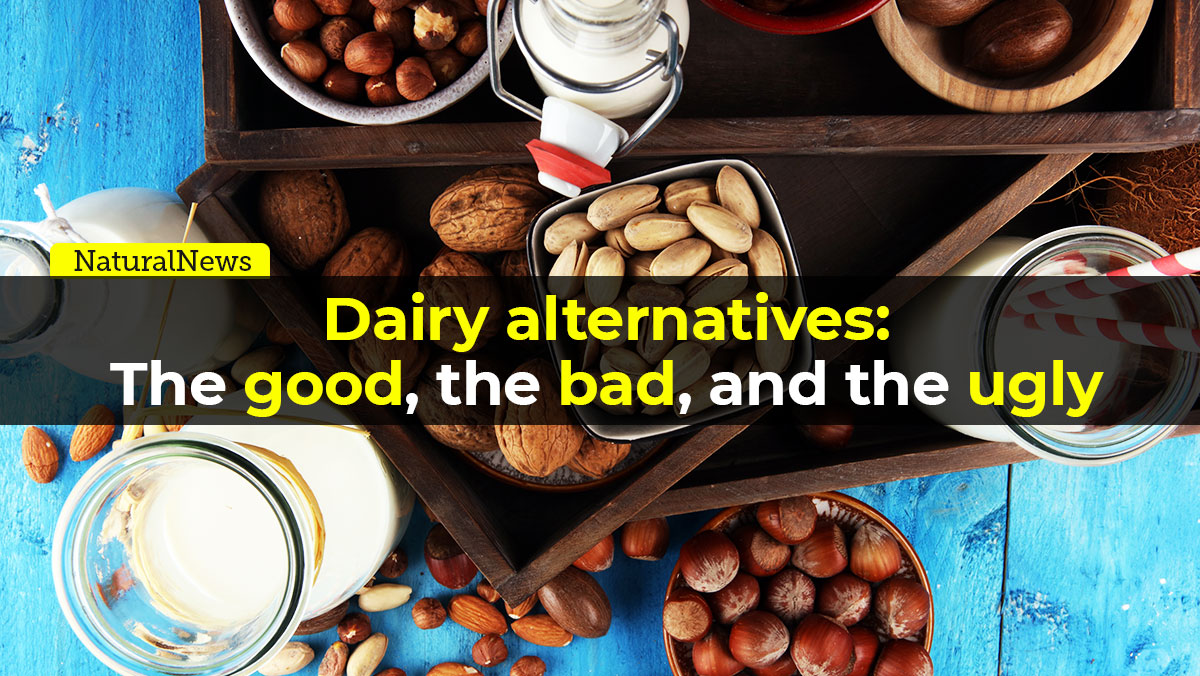
( Natural News ) Conventional dairy products are often one of the first substitutes a family makes when transitioning to a healthier lifestyle. It makes perfect sense, when you consider that conventional dairy is pasteurized (enzymes destroyed), tainted with GMOs, and infected with residual antibiotics and hormones that have been injected into the cows producing the milk. Is it any wonder why this milk is acidic and mucous forming to the body? It’s virtually guaranteed to cause intestinal inflammation. Thankfully, alternatives have been produced but, as with any new product, the question always remains — is the producer hell-bent on creating a high quality product, or riding a profitable trend to the promise land, leaving ethics behind? Unfortunately, it seems it’s mostly the latter. Good dairy alternatives There are plenty of nice dairy alternatives to chose from, and each has their healthiest versions. So depending on what you prefer, here are some of the most common options, that are best of their class. Homemade almond milk : The most common of dairy alternatives, almond milk has been around for decades and lines the shelves of nearly any grocery store with healthier options. However, the only way to get good almond milk is to make it yourself because there are negligible (if any) options for organic, sprouted, and fresh almond milk in the store. Fortunately, almond milk is very easy to make at home, simply by soaking almonds for 8 hours or more and running them through a blender with purified water. Here’s the full recipe, to make clean, fresh, and easily digested almond milk . Mother Nature’s micronutrient secret : Organic Broccoli Sprout Capsules now available, delivering 280mg of high-density nutrition, including the extraordinary "sulforaphane" and "glucosinolate" nutrients found only in cruciferous healing foods. Every lot laboratory tested. See […]
Do These 3 Things Today To Keep Your Memory From Failing Later

By the year 2050, the United States will have 14 million people in need of full-time care for Alzheimer’s disease, a number equal to the populations of New York City, Los Angeles, and Chicago combined. Anxiety disorders are the most common mental illness in the United States, affecting 40 million adults , and issues like brain fog are finally being taken seriously. Taking care of our brain health is more urgent than ever, so we’re spending the next 10 days at mindbodygreen talking about our brains and what we can all do to protect our mental health. Follow along here at #mbgbrainhealth and on Instagram and Twitter . And be sure to sign up for our FREE brain health webinar with 11-time NYT best-selling author and pioneering functional medicine doctor Dr. Mark Hyman . Memory loss is not a normal part of aging; it does not have to be our fate (despite what you may have heard from doctors or articles). There’s another way to think about brain aging. The brain responds to all the same insults as the rest of the body—stress, poor diet, toxins, lack of exercise or sleep, nutritional deficiencies, and more. We can prevent and reverse cognitive decline, at any age, when the right steps are taken. Dementia is an issue that’s growing every day. Sadly, dementia and Alzheimer’s alone are responsible for the death of one out of every three seniors, more than breast cancer and prostate cancer combined. But memory loss is not just limited to seniors. Up to 5 percent of all Alzheimer’s cases are early-onset —which can happen at any age, but the general description is that it’s prior to 65 years old. Just since 2000, deaths from Alzheimer’s have increased by a staggering 123 percent. Not only is this devastating […]
Good belly bugs boost brainpower
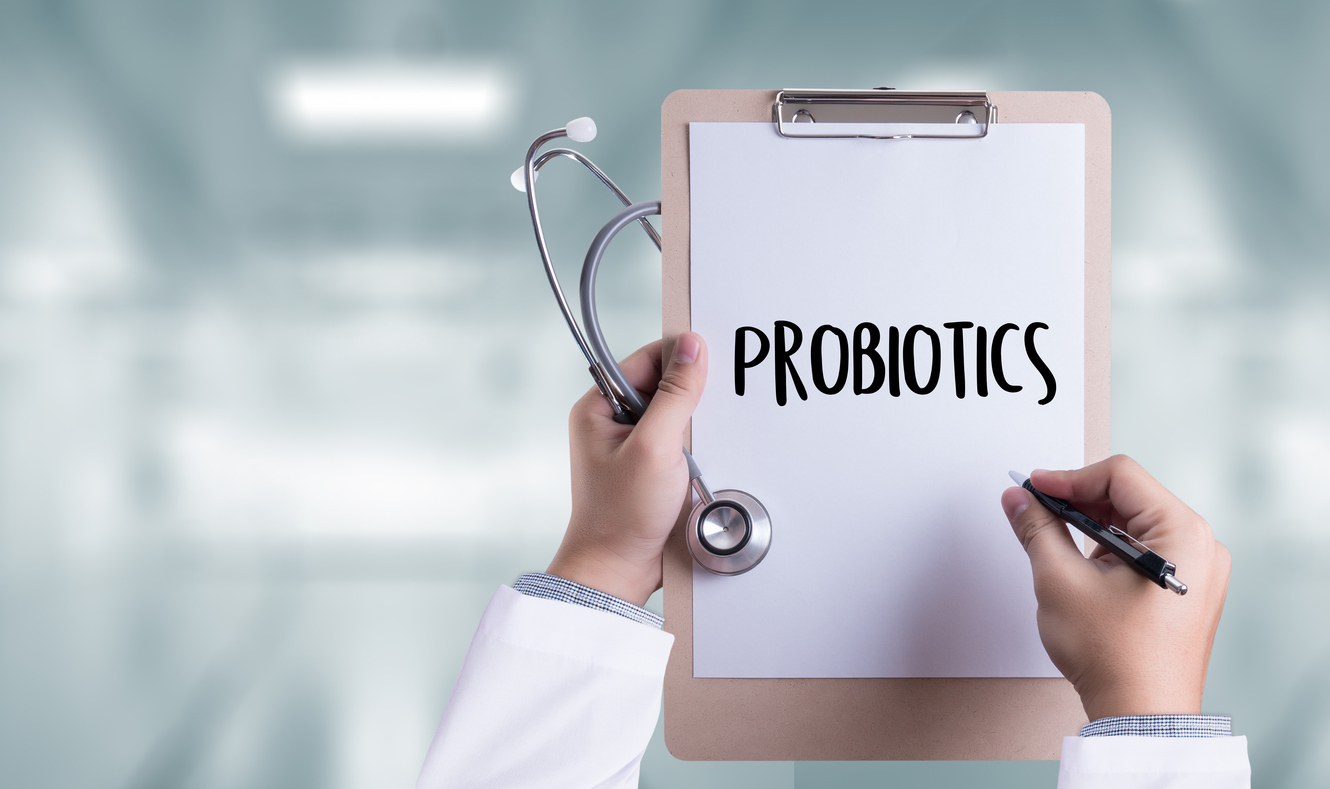
Imagine forgetting your way home… the names and faces of those you know… and even some of your cherished life experiences. When you’ve got Alzheimer’s disease, the changes that happen in your brain can devastate your memory. And once it takes hold, there’s no pill you can swallow to get your memories back. But according to a new study, there’s something natural that can guard against the brain changes of Alzheimer’s and sharpen your memory — and you can find it in foods as common as your morning yogurt. I’m talking about probiotics! As I’ve shared with you before, probiotics are “good” bacteria that take up residence in your gut… but their beneficial effects can be felt all the way up to your BRAIN! In the study, Iranian researchers induced Alzheimer’s disease in rats and then fed some of them probiotics for two months. By the end of the study, the rats that received the probiotics performed BETTER on memory tests than the rats that didn’t. What’s more, researchers found that the mice that ate probiotics showed LESS oxidative stress in the hippocampus (part of the brain crucial for learning and memory) than the mice who hadn’t. And that’s important — because we know that oxidative stress can lead to chronic inflammation and the buildup of beta amyloid, which are both risk factors for Alzheimer’s. Now, we don’t know exactly how upping the beneficial critters in your gut can change your brain. But the evidence is mounting that brain health begins with gut health — which is why your gut has earned the reputation as your “second brain.” The two are connected by something called the “gut-brain axis,” and previous studies have shown that your good gut bugs can trigger an immune response that discards damaged brain cells and […]
First language study using new wearable brain scanner
Printer-friendly version Researchers at UCL and the University of Nottingham have mapped the brain’s language area in the first study of human cognition using a new generation of brain scanner that can be worn like a helmet. This marks an important step forward in the translation of their new technique from the laboratory bench to a genuinely useful tool for cognitive neuroscience and clinical application, enabling researchers to scan the brains of people while they move about. The Wellcome-funded study, published in NeuroImage , was conducted by researchers at the UCL Wellcome Centre for Human Neuroimaging and the Sir Peter Mansfield Imaging Centre, University of Nottingham. From a neuroscience perspective this work is very exciting as it allows us to study tasks that we could never have contemplated before with conventional scanners (where the head has to remain fixed),“From a neuroscience perspective this work is very exciting as it allows us to study tasks that we could never have contemplated before with conventional scanners (where the head has to remain fixed),” said co-lead author Professor Gareth Barnes (UCL Wellcome Centre for Human Neuroimaging). “For example, people interacting naturally or people navigating through virtual worlds and laying down memories. Importantly, we can do this throughout the lifespan – allowing us to understand how key functions like memory or language develop and how they degrade in dementia.” Using the new wearable magnetoencephalography (MEG) system the research team were able to map the parts of the brain responsible for language. Brain cells operate and communicate by producing electrical currents that generate tiny magnetic fields that can be detected outside the head using MEG scanners. The scans map brain function with a millisecond-by-millisecond picture of which parts of the brain are engaged when we undertake different tasks, such as speaking or moving. In […]
Prevent memory decline by being more physically active and caring for your heart

( Natural News ) According to a recent study, both overall physical fitness and the stiffness of the central arteries can help shed light on the how fast certain aspects of memory decline . Researchers from the Centre for Human Psychopharmacology at Swinburne University who authored the study looked at the mechanisms that affect the cognitive performance of older people who live independently. How the research was done Greg Kennedy, a doctoral student and the study’s lead author, explained that starting from early adulthood, one’s memory and other aspects of cognition gradually start to decline, with the risk of developing dementia in later life increasing over the years. He says that while the exact reason for this risk remains unknown, research implies that exercise and physical fitness can help prevent it. According to experts, a healthier and more elastic aorta can also help prevent cognitive decline by minimizing the harmful effects of excessive blood pressure on the brain. (Related: Older adults who exercise for 6 months have healthier brains .) For the study, the researchers tried to determine if a healthier aorta was the link between physical fitness and better cognition. The study participants, who hailed from Melbourne, Australia, were aged 60 to 90 years old. The 102 volunteers, 73 females and 29 males, were all living independently in aged-care communities. The researchers assessed their fitness using the Six-Minute Walk test. All of the participants were asked to walk back and forth between two markers placed 10 meters apart for six minutes. 100% organic essential oil sets now available for your home and personal care, including Rosemary, Oregano, Eucalyptus, Tea Tree, Clary Sage and more, all 100% organic and laboratory tested for safety. A multitude of uses, from stress reduction to topical first aid. See the complete listing here […]
Ask the doctors: Recent study suggests dark chocolate can improve mood and memory
Dear Doctor: I have some dark chocolate every day and my (otherwise kind and loving) husband teases me for believing the news stories that chocolate is good for you. Please tell me that I haven’t fallen for a bunch of quack science! Dear Doctor: We can certainly understand how the idea that chocolate offers health benefits might spark a bit of skepticism. After all, when we hear about so-called superfoods, it’s foods like kale, fish oil or green tea that tend to top the list. The idea that something as delicious as chocolate might be anything more than an indulgence takes a bit of getting used to. And yet you’re right – a number of studies have linked chocolate with a range of positive outcomes. The results of recent research suggest that chocolate improves memory and brain function, lowers blood pressure and cholesterol, can boost immunity and has a positive effect on mood. But before you unwrap a chocolate bar in celebration, there’s an important caveat. It’s only dark chocolate that confers these positive effects. That is, chocolate with a minimum cacao concentration of 70 percent. That’s because cacao is rich in chemical substances known as flavanols, which have potent antioxidant properties. Studies have shown that flavanols have a positive effect on connections between brain cells, offer protection from toxins and can shield the body from some of the damaging effects of inflammation. The catch here is that in its pure state, cacao is relentlessly bitter. It’s the sugar and fat that get added during manufacturing that give chocolate its sweetness and silky-smooth feel. For many people, the high levels of cacao needed for chocolate to become potentially beneficial render it unpalatable. If you’re a lover of dark chocolate, though, you’re in luck. The results of two recent studies […]
Known as the “bliss molecule”, anandamide is a natural way to stimulate a sense of happiness

You probably have not heard of anandamide, but you would have certainly felt its effects. The “bliss molecule” is a natural neurotransmitter and endocannabinoid that creates a sense of happiness, an article on Be Brain Fit stated. Anandamide stimulates the same pleasure receptors as the main cannabinoid in marijuana. Unlike tetrahydrocannabinol, this endocannabinoid is naturally produced by your body. It can also be found in some foods. Endocannabinoids can also shield against psychiatric diseases like major depression and post-traumatic stress disorder. Anandamide itself helps the brain consolidates memory. It can work alongside marijuana in stimulating brain receptor, thereby protecting the brain from neuroinflammation, strokes, and the loss of memory. A lack of endocannabinoids is theorized to increase the risk of various maladies such as depression, multiple sclerosis, and Parkinson’s disease. A deficiency in anandamide itself can make a person unhappy, fearful, anxious, and unable to handle stress. (Related: Turn up your happiness dial with these simple tips: From sleeping more to eating chocolate, easy ways you can be happy NOW .) Chocolate contains plenty of “bliss molecules” Only a few foods naturally contain anandamide. Of this select group, just two have large amounts of the endocannabinoid. One of these sources is black truffles, one of the most expensive foods in the world. The 2018 price for a single ounce of black truffle is close to $100. The rarer white truffles go for twice as much as the black ones. Mother Nature’s micronutrient secret : Organic Broccoli Sprout Capsules now available, delivering 280mg of high-density nutrition, including the extraordinary "sulforaphane" and "glucosinolate" nutrients found only in cruciferous healing foods. Every lot laboratory tested. See availability here. Fortunately, the other food is chocolate. Specifically, the cocoa that makes up the very popular sweet is a rich source of anandamide. Chocolate contains […]
Known as the “bliss molecule”, anandamide is a natural way to stimulate a sense of happiness

( Natural News ) You probably have not heard of anandamide, but you would have certainly felt its effects. The “bliss molecule” is a natural neurotransmitter and endocannabinoid that creates a sense of happiness, an article on Be Brain Fit stated. Anandamide stimulates the same pleasure receptors as the main cannabinoid in marijuana. Unlike tetrahydrocannabinol, this endocannabinoid is naturally produced by your body. It can also be found in some foods. Endocannabinoids can also shield against psychiatric diseases like major depression and post-traumatic stress disorder. Anandamide itself helps the brain consolidates memory. It can work alongside marijuana in stimulating brain receptor, thereby protecting the brain from neuroinflammation, strokes, and the loss of memory. A lack of endocannabinoids is theorized to increase the risk of various maladies such as depression, multiple sclerosis, and Parkinson’s disease. A deficiency in anandamide itself can make a person unhappy, fearful, anxious, and unable to handle stress. (Related: Turn up your happiness dial with these simple tips: From sleeping more to eating chocolate, easy ways you can be happy NOW .) Chocolate contains plenty of “bliss molecules” Only a few foods naturally contain anandamide. Of this select group, just two have large amounts of the endocannabinoid. One of these sources is black truffles, one of the most expensive foods in the world. The 2018 price for a single ounce of black truffle is close to $100. The rarer white truffles go for twice as much as the black ones. The power of the elements : Discover Colloidal Silver Mouthwash with quality, natural ingredients like Sangre de Drago sap, black walnut hulls, menthol crystals and more. Zero artificial sweeteners, colors or alcohol. Learn more at the Health Ranger Store and help support this news site. Fortunately, the other food is chocolate. Specifically, the cocoa that makes […]
Nootropics Market: Future Prospects Details for Industry Forecast to 2018 – 2025
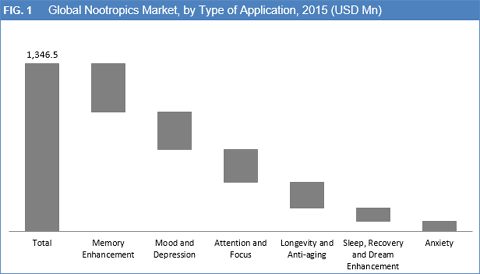
According to the latest report published by Credence Research, Inc. “ Nootropics Market – Growth, Future Prospects and Competitive Analysis, 2016-2024,” the global nootropics market was valued at USD 1,346.5 Mn in 2015, and is expected to reach USD 6,059.4 Mn by 2024, expanding at a CAGR of 17.9% from 2016 to 2024. Browse the full report Nootropics Market – Growth, Future Prospects and Competitive Analysis, 2016–2024 at http://www.credenceresearch.com/report/nootropics-market Market Insights Nootropics, also known as cognitive enhancers are drugs and natural extracts that improve cognitive functions such as memory, creativity, motivation in healthy individuals. Nootropics have been available in the market for several decades and were made of ingredients such as multivitamins and caffeine – substances that the FDA has approved as dietary supplements and classified as GRAS (generally regarded as safe). At present, these products are being repackaged, repurposed and sold to academic and professional overachievers to augment their brain function. Companies operating in this space primarily succeed as lifestyle brands through smart marketing. However they can only be recognized as healthcare brands only after they develop products that secure regulatory approval thus establishing certified efficacy and safety to their products. Among the key applications of nootropics, memory enhancement currently holds the largest revenue share and it is anticipated that the segment will maintain its lead through the forecast period 2016-2024. Major factors favoring the demand for memory enhancing nootropics include growing awareness among students and executives about the promised benefits of nootropics, easy accessibility, and the booming market for supplements. The memory enhancing nootropic drugs enhance learning and memory effect, enhance the ability of learned behaviors to resist disruption, enhance the efficiency of your brain functions and protect the brain from chemical injuries. Memory enhancement segment for nootropics was valued at USD 391.6 Mn in 2015. Geographically, […]
Bright light stimulates memory and learning, according to research

( Natural News ) The lighting condition in your room affects your brain. Being exposed to bright light boosts memory and learning , according to a new study published in the journal Hippocampus . A group of scientists from Michigan State University carried out a study on the link between lighting and brain structure . In conducting the study, the group examined the brains of Nile grass rats after exposing them to dim and bright lights in a span of four weeks. After they conducted the trials, they found that the rats exposed to bright light exhibited significant improvement on a task that they had trained on in the past, which tested their learning and memory capacity. (Related: Use of Bright Lighting May Improve Dementia Symptoms .) On the other hand, the rats exposed to dim light lost around 30 percent of capacity in the hippocampus and poorly performed on the spatial task. The hippocampus is an important region in the brain that is involved in the learning and memory ability of an individual. “When we exposed the rats to dim light, mimicking the cloudy days of Midwestern winters or typical indoor lighting, the animals showed impairments in spatial learning,” said Antonio Nunez, psychology professor and one of the researchers of the study. But when the dim light-exposed rats were then exposed to bright light for four weeks after a break for one month, they fully restored their brain capacity and exhibited better performance on a spatial task. Nunez likened the effect to when people cannot find their way back to their cars in a full parking lot after they spent several hours in a mall or movie theater. Support our mission and enhance your own self-reliance : The laboratory-verified Organic Emergency Survival Bucket provides certified organic, high-nutrition storable […]
Natural ways to boost BDNF levels, a protein that encourages the growth of new brain cells

( Natural News ) Brain-derived neurotrophic factor (BDNF) encourages the growth of new brain cells while also helping to preserve existing cells. There are many natural ways to raise the levels of this important protein, an article in Be Brain Fit stated. First, avoid factors that lower BDNF levels. Some of these, such as brain-related mental conditions, stress, or age, are not alterable. For example, if your mother was stressed when she was carrying you in her womb, chances are that you have low levels of BDNF, to begin with. However, you can control the food you eat and the amount of sleep you get. Avoid processed foods, especially those with plenty of fat and sugar, and rest well during the night. (Related: Brain-boosting food: Fish prevents Parkinson’s disease .) Exercise is good for the brain as well as the body Now, the best way to boost BDNF levels is to engage in regular physical exercise. Dr. John Ratey of Harvard Medical School recommends spending at least 10 minutes on aerobic exercise. He also recommends switching from one type of exercise to another, such as biking, running, and swimming. Dr. Ratey highly suggests sprinting as fast as you can for 30-40 seconds, slowing down for five minutes, and sprinting again until you achieve five such bursts. You can also try dancing, high-impact running, resistance training, and yoga. Not everyone has the drive, energy, or time to exercise. You can instead change your lifestyle and engage in activities that promote BDNF production . Spend some time outdoors in plenty of sunshine. Sunbathing does not just increase vitamin D , it also boosts BDNF. The power of the elements : Discover Colloidal Silver Mouthwash with quality, natural ingredients like Sangre de Drago sap, black walnut hulls, menthol crystals and more. Zero […]
Move over blueberries, the chokeberry contains high concentrations of antioxidants that protect your brain from damage
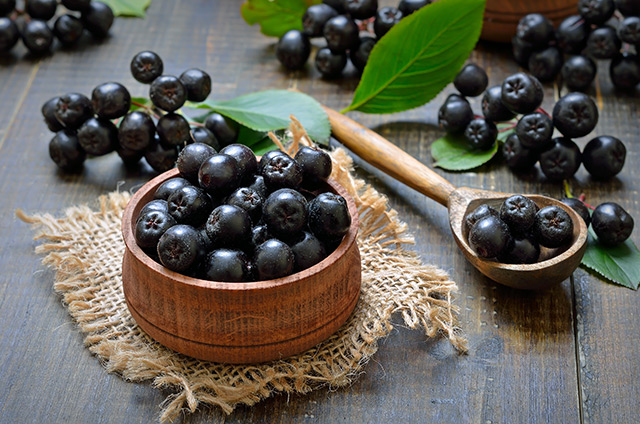
( Natural News ) Berries are known not just for their taste, but also for their nutritional content. Despite their small size, most berries are packed with minerals and antioxidants that your body needs for optimal health. This has earned many of them the reputation of being superfoods. The blueberry, for instance, is known for protecting the body from oxidative damage through its sizable antioxidant content. The chokeberry ( Aronia melanocarpa ), a relative of the rose, can do the same , says a study published in the journal BMC Complementary and Alternative Medicine . In the study , researchers tested the benefits of chokeberry extracts on HT22 cells, the same cells found in the hippocampus of mice. They induced oxidative damage on the brain cells by the application of glutamate. Glutamate is also known as glutamic acid. As an excitatory neurotransmitter, it is essential to the creation of action potentials , the electrical impulses that allow your brain to direct action throughout your body. This makes glutamate one of the most important neurotransmitters of all. Glutamate offers other benefits, such as stimulating the digestive system and boosting your immunity. But like what the classic adage says, too much of everything is bad. Excessive levels of glutamate cause oxidative stress and are linked to neurodegenerative conditions such as Alzheimer’s disease, Parkinson’s disease, and Huntington’s disease. The researchers wanted to know if chokeberry extracts could protect the brain from the damage caused by increased glutamate levels. They tested the extract in vitro and evaluated a number of oxidative stress parameters, including the level of reactive oxygen species (ROS), intracellular Ca2+ level, glutathione level, and antioxidant enzyme activity in the HT22 cells. The power of the elements : Discover Colloidal Silver Mouthwash with quality, natural ingredients like Sangre de Drago sap, […]
What are the best nootropics for improving either mood or motivation?
There are many nootropics that can improve mood, but SSRI medication will probably more effective for a serious case of depression and lack of motivation. If you feel like this, you should consult your physician before attempting to self correct this issue. However if your case is not serious, and you are going through a patch of low mood and motivation, as people normally do from time to time, then certain nootropics can certainly help you to turn things around. Please be aware that natural nootropics are not ‘miracle drugs’ (synthetic drugs can have a more instant effect, but the risks outweigh the benefits in the long run), so you must channel your inner motivation (we all have it) to overcome your problems and live the best life that you can live. Just focus on being the best version of yourself, and confidence will eventually follow (confidence is not knowing you have succeeded, but knowing that you have done your absolute best). Please read my answer below which describes how specific nootropics can help you with this: Charlie Phaure’s answer to Is methylcobalamine b-12 a form of supplement that stimulates the brain, such as mental focus, speech development and concentration?
Boost Your Mood and Memory With Sulbutiamine
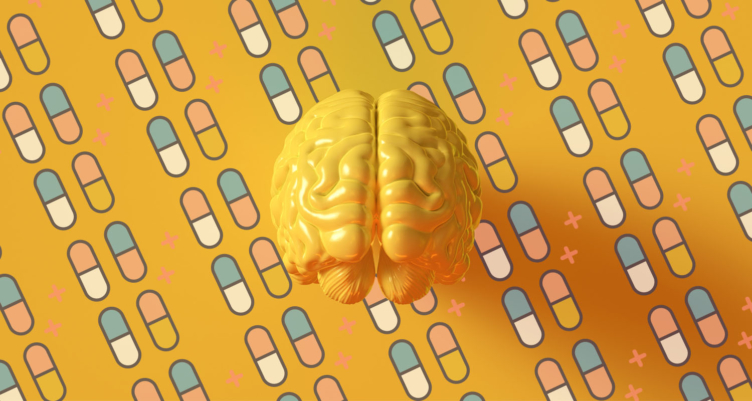
Sulbutiamine is an upgraded version of vitamin B1 that can pass the blood-brain barrier and reach your brain. Sulbutiamine is a nootropic (aka smart drug) that decreases both mental and physical fatigue. It’s great for days when you’re feeling a little slow or unfocused. Sulbutiamine also improves mood, and may boost long-term memory. NOTE: you want to cycle sulbutiamine. Check the last section of this article for details. If you’re interested in brain-boosting smart drugs (aka nootropics ), it’s worth your time to try sulbutiamine. What is sulbutiamine? Sulbutiamine is an upgraded version of vitamin B1. Japanese researchers developed it in the 1960s. They were trying to fix a growing vitamin B1 deficiency in the Japanese population. Good news: they succeeded. Sulbutiamine is unusually bioavailable — in other words, you absorb it very well, and unlike normal vitamin B1, sulbutiamine passes through your blood-brain barrier, supplying your brain with the precious B vitamin. [1] Benefits of sulbutiamine No surprise, then, that sulbutiamine has become a staple of the nootropic community. You can use it to upgrade your mind in a few different ways. The two big sulbutiamine benefits are energy and memory, and there are a couple extra benefits too. Let’s take a look at how sulbutiamine can help you build a sharper brain. Sulbutiamine to decrease fatigue and improve mood Increases energy and stamina : Sulbutiamine is ideal for those days when you’re feeling slow but want to get a lot done. Several large studies have found that sulbutiamine significantly increases energy in people who are feeling fatigued. [2] [3] [4] [5] [6] Improves mood and lowers anxiety : Sulbutiamine may also be good for mood and anxiety. Two studies have found that it relieves anxiety, depression, and social shyness. [7] [8] But what if you’re a happy, […]
Pilot Study Indicates Qualia Mind Improving Reasoning, Episodic Memory, Verbal Ability and Concentration
Pilot Study Indicates Qualia Mind Improving Reasoning, Episodic Memory, Verbal Ability and Concentration Neurohacker Collective Offering Free Cognitive Assessments with Purchases of Qualia Mind PR Newswire ENCINITAS, Calif., Aug. 7, 2018 ENCINITAS, Calif., Aug. 7, 2018 /PRNewswire/ — Neurohacker Collective recently began a pilot study using the CBS Health platform powered by Cambridge Brain Sciences (CBS)—a leading provider of cognitive testing tools—to help customers receive quantitative feedback on their current brain health. In the initial pilot study, customers were self-selected and offered free cognitive testing with the purchase of Neurohacker Collective’s nootropic, Qualia Mind . Participants were asked to complete the testing three times: before starting on Qualia Mind, after their first dose of Qualia Mind, and the final test after five days of using Qualia Mind. The results for the 23 eligible subjects revealed meaningful improvement in core cognitive areas of reasoning, verbal ability and concentration. After 5 days of taking Qualia Mind, participants saw an average 85.4% increase in scores to measure ability to concentrate/avoid distraction, 37.2% increase in scores for planning skills, 31.1% increase in scores for visual representation, 16.9% increase in scores for verbal reasoning, 13.3% increase in scores for verbal short-term memory, and 10.2% increase in scores for episodic memory. While these are just preliminary findings on a small number of people, they are exciting initial results to see. For additional details on the study visit neurohacker.com/qualia-mind-pilot-study . Neurohacker Collective is now preparing to offer the program to all customers using Qualia Mind, who will have the option to take Cambridge Brain Sciences quantitative tests before and after starting to use the product so that each customer can see the changes in their cognitive function from an empirical standpoint. "I’m not surprised by the initial findings of the pilot study using CBS Health. They […]
Brain-boosting food: Fish prevents Parkinson’s disease

( Natural News ) Those of us who grew up in the 1980s are familiar with Parkinson’s disease because we have watched in shock as its effects have slowly ravaged the body of one of our most beloved actors: Michael J. Fox. More recently, news broke that Alan Alda, best known for his role as Capt. Benjamin Franklin “Hawkeye” Pierce on the 1970s hit TV show M*A*S*H, has been fighting the disease for three years . The truth is, Parkinson’s can strike anyone, anywhere, and many of us have a family member or loved one who is battling the disease. Medical experts cannot pinpoint the causes of Parkinson’s, though it is believed to have both genetic and environmental triggers. Now, an encouraging new study by researchers from Chalmers University of Technology , Sweden, provides hope that this devastating disease can be prevented through the increased consumption of fish. The link between eating fish and decreasing the risk of Parkinson’s Fish is undeniably one of the healthiest foods on the planet . Loaded with nutrients like protein, vitamin D and Omega-3 and 6 fatty acids, eating more fish can lower your risk of heart attack and stroke, promote brain and eye development during pregnancy (but be sure to avoid fish containing mercury), protect against age-related cognitive decline, increase happiness, and much more. (Related: Avoid eating these 11 types of fish to reduce your exposure to mercury .) Many of the health benefits of fish have been attributed to its high levels of Omega-3 and 6 fatty acids , but while these nutrients undeniably provide excellent health benefits, the Swedish research team discovered that they are not responsible for reducing the risk of Parkinson’s disease. Instead, a protein called parvalbumin , found in large quantities in many types of fish, provides […]
Eating a mango every day prevents constipation

( Natural News ) The brightly-colored sweetly-tart mango fruit is considered to be a true superfood. From India – where it is mostly grown, to the coasts of Florida and Southern California – where we get our own supply, mangoes are the most cultivated fruits in the world. It’s no wonder: The drupe is not only incredibly delicious but good for you, too, especially when it comes to digestive health. A new study published in Molecular Nutrition & Food Research found that eating a medium-sized mango (or around 300 g of its equivalent amount of fiber) every day for four weeks can dramatically reduce symptoms of chronic constipation. This makes the mango a natural and effective laxative aid for certain digestive indications. In this new study, researchers saw that the daily consumption of mangoes significantly improved constipation status (in terms of stool frequency, consistency, and shape); increased gastrin levels and fecal concentrations of short-chain fatty acid (valeric acid); and lowered endotoxin and interleukin-6 concentrations in plasma. These effects are believed to be caused by the high amounts of fiber and polyphenols found in mangoes. The synergistic qualities of these compounds reduced intestinal inflammation which may, in turn, contribute to constipation. The pilot study concluded that mangoes might be an easy way to relieve constipation . Authors of the study, however, caution that the drupe does not fully address all gastrointestinal conditions and should be used as a supplement to other healthy lifestyle choices such as physical exercise and a varied diet. 100% organic essential oil sets now available for your home and personal care, including Rosemary, Oregano, Eucalyptus, Tea Tree, Clary Sage and more, all 100% organic and laboratory tested for safety. A multitude of uses, from stress reduction to topical first aid. See the complete listing here , […]
